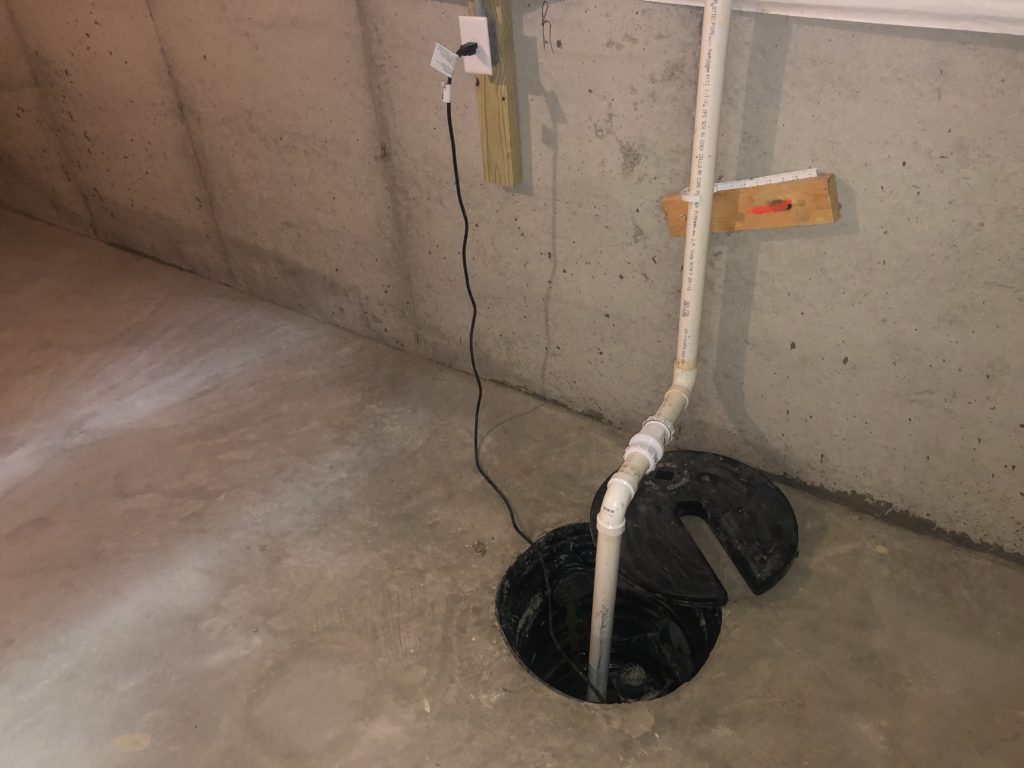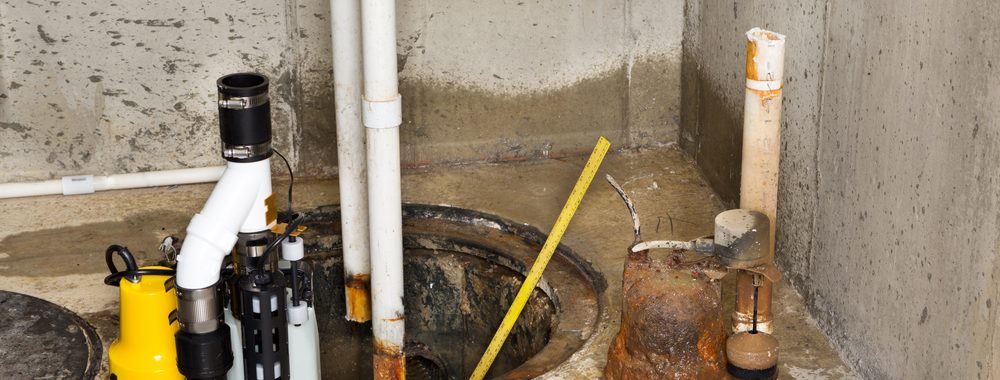We have stumbled upon this article involving Steps to Cleaning Your Sump Pump Properly down the page on the net and accepted it made sense to relate it with you here.

Sump pumps are essential components in many homes, specifically in areas prone to flooding or excessive moisture. They help prevent water damages by successfully removing excess water from basements or crawl spaces. However, like any other home appliance, sump pumps need normal upkeep to guarantee they work successfully when needed one of the most. Cleansing your sump pump is a crucial part of its maintenance, and comprehending exactly how to do it correctly can save you from costly repairs and potential calamities.
Introduction
Maintaining a tidy sump pump is crucial for its correct performance and durability. Disregarding this important job can result in clogs, breakdowns, and inevitably, water damage to your building. Therefore, discovering how to clean a sump pump is critical for property owners that depend on these gadgets to maintain their basements completely dry and protected.
Recognizing the Sump Pump
Before diving into the cleansing process, it's important to have a basic understanding of how a sump pump functions. Normally set up in a pit or container listed below the basement floor, a sump pump contains a number of vital parts, including a pump, a float button, and a discharge pipe. When water builds up in the pit, the float button turns on the pump, which after that pumps the water out through the discharge pipeline, away from the building's structure.
Indications of a Dirty Sump Pump
Knowing when your sump pump requires cleaning is essential for stopping potential breakdowns. Some typical indications that indicate a filthy sump pump consist of odd noises throughout procedure, decreased water flow, and visible particles in the pit. If you observe any one of these symptoms, it's vital to cleanse your sump pump immediately to stay clear of any additional issues.
Getting ready for Cleansing
Prior to you begin cleansing your sump pump, it's vital to take some safety and security preventative measures. Beginning by turning off the power to the pump to avoid any kind of electrical crashes. Additionally, use proper protective gear, such as handwear covers and goggles, to protect yourself from dust, particles, and potential microorganisms.
Step-by-step Overview to Cleansing a Sump Pump
Turning off the Power
Begin by separating the power supply to the sump pump to stop any kind of crashes while cleaning.
Eliminating Debris and Dirt
Make use of a container or an inside story to remove any kind of visible particles, dirt, or debris from the sump pit. Dispose of the particles effectively to prevent it from blocking the pump or the discharge pipe.
Cleaning up the Pump and Drift Change
Once the pit is clear of particles, very carefully get rid of the pump from the pit. Examine the pump and the float switch for any type of signs of damage or wear. Make use of a soft brush or cloth to cleanse the surfaces and remove any kind of accumulated gunk.
Flushing the System
After cleansing the pump and float switch, flush the sump pit with tidy water to remove any kind of staying dirt or debris. This will certainly assist make sure that the pump operates efficiently and successfully.
Checking for Proper Functioning
Before re-installing the pump, perform a quick test to make sure that the float switch triggers the pump properly. Pour some water into the sump pit and observe the pump's procedure. If every little thing is working properly, you can rebuild the pump and reconnect the power supply.
Maintenance Tips to Maintain Your Sump Pump Clean
Along with periodic cleansing, there are a number of upkeep tips you can comply with to keep your sump pump in optimal problem:
- Regular Examination: Examine your sump pump on a regular basis for any type of indications of wear, damages, or obstructions.
- Keeping the Surrounding Area Clean: Make Certain that the area around the sump pit is without particles, dirt, and obstructions.
- Testing the Pump Occasionally: Check your sump pump regularly by pouring water right into the pit and observing its procedure. This will certainly aid you recognize any type of potential concerns before they escalate.
Verdict
Cleaning your sump pump is an important aspect of its upkeep and ensures that it runs properly when you need it the most. By adhering to the actions described in this guide and including normal upkeep into your regimen, you can expand the life expectancy of your sump pump and protect your home from water damages.
6 STEPS ON HOW TO CLEAN A SUMP PUMP PROPERLY
UNDERSTANDING SUMP PUMPS
Your sump pump plays a crucial role in protecting your home by managing and removing excess water. It primarily functions as a “shield”, guarding your basement against the damaging effects of water accumulation. The pump is housed in a sump pit in the lowest part of your basement, and its job is to pump out any water that collects there.
During heavy rainfalls or when snow melts rapidly, water can infiltrate your basement, posing potential risks like flooding, structural damage, and harmful mold growth. Here, the sump pump springs into action, pumping out the intruding water and directing it away from your home.
SAFETY FIRST
Before cleaning, remember to prioritize safety. Disconnect the sump pump from the power source to prevent any accidental electric shocks. Also, wear sturdy gloves to protect your hands from any sharp or dirty components within the pump.
REMOVE THE SUMP PUMP
After ensuring your safety, the next step is to remove the sump pump from its pit. Doing this might require careful maneuvering as you don’t want to damage any pump components. Once removed, clean the sump pit to remove any accumulated debris or sludge.
INSPECT THE PUMP
Inspect the pump for any visible signs of wear or damage. Check the power cord, float switch, and impeller housing. If any components look worn out or damaged, consider replacing them to ensure optimal performance.
CLEAN THE PUMP
Thoroughly clean the pump with warm, soapy water. Make sure to rid it of any dirt, gravel, or other debris that might impede its performance. You can use a toothbrush to clean the small, hard-to-reach parts of the pump.
REINSTALL THE SUMP PUMP
- Reinstall the pump into the sump pit
- Make sure it’s positioned correctly to remove the water effectively
- Once it’s back in place, reconnect it to the power source
TEST THE PUMP
Finally, pour some water into the pit to ensure the pump works correctly. It should start automatically and begin pumping out the water; if it doesn’t, check the power source and the positioning of the pump.
Remember, while cleaning your sump pump is an essential part of home maintenance, hiring a professional plumber for a thorough inspection and cleaning at least once a year is also important. This will ensure that your pump is in optimal condition, ready to protect your home from potential water damage.
BEST PRACTICES FOR CLEANING SUMP PUMP DISCHARGE PIPES
- Regular Inspection: Regularly inspect your discharge pipes, especially during heavy rainfall or snowmelt periods. Look for any signs of blockage or damage. Early detection of problems can prevent serious issues down the line.
- Periodic Cleaning: Over time, sediment and debris can accumulate in the discharge pipes, impeding the flow of water. Regular cleaning helps keep the pipes clear and functioning efficiently. You can use a high-pressure water jet to effectively clean the pipes.
- Insulation During Winter: In colder climates, discharge pipes can freeze, blocking the outflow of water. Protect your discharge pipes from freezing temperatures by insulating them with foam pipe insulation. This will ensure the sump pump can continue to discharge water even in freezing conditions.
- Proper Positioning: The discharge pipe should be positioned to direct water away from your home’s foundation. Improper positioning can lead to water seeping back into the basement. Ensure the pipe is long enough and angled correctly.
- Installation of a Check Valve: A check valve prevents water from flowing back into your sump pit after the pump has pushed it out. Installing a check valve helps maintain the efficiency of your sump pump and reduces the risk of flooding.
- Minimize Pipe Turns: Every curve or turn in the discharge pipe can decrease the efficiency of water flow. By minimizing turns and bends in your discharge pipe, you can increase the efficiency of your sump pump.
https://www.fullspeedplumbing.com/how-to-clean-a-sump-pump-properly9999/

I hope you liked our post on How to Care for Your Sump Pump. Thanks so much for spending some time to read our piece. Those who enjoyed our blog post kindly make sure you remember to share it. Many thanks for going through it.
Schedule And Pricing
Comments on “Clear Tips for Taking Care of Your Sump Pump”